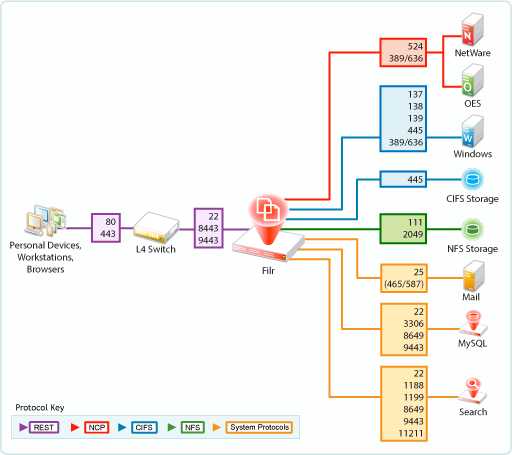3.12 Planning Network Support
3.12.1 Bandwidth
The communication required between Filr and targeted filr servers is significant. Remote Data locations with latency add delays to the end user experience.
Ensure that you locate Filr as close to the target file servers as possible.
If you have multiple remote data locations, then best practices dictate that you deploy multiple Filr installations rather than attempting to span the latency links.
3.12.2 Load Balancing
In deployments of two or more Filr Appliances, a load balancer is recommended.
Hardware or software solutions can be used.
NetIQ Access Manager can be leveraged with some limitations. For example, Access Manager can not authenticate external users.
3.12.3 IP Address Information
-
On your panning worksheet, record the IP settings and addresses for your Filr deployment.
-
When you have planned IP address information, continue with
Ports and Firewalls.
3.12.4 Ports and Firewalls
-
On your panning worksheet, record the port numbers needed for your Filr deployment.
-
When you have planned ports and firewalls, continue with
Planning the Virtual Machines and VM Host Servers.
Figure 3-4 is borrowed from the Filr 2.0 Beta: How Filr Works–Overview Guide and summarizes the default port numbers that Filr uses for data communication.
Figure 3-4 Default Ports Used in a Filr Deployment
